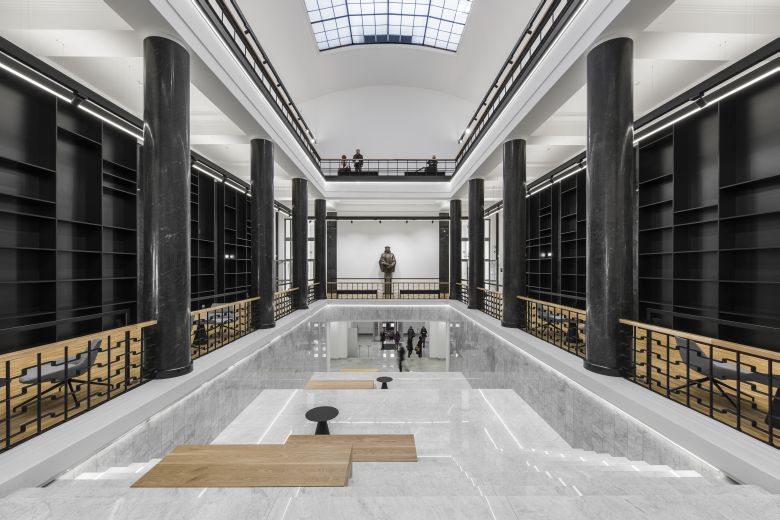2XJ

Reconstruction of the Martynas Mažvydas National Library of Lithuania. Category: public building
Reconstruction design: 2008
Construction: 2012–2016
Interior: 2015-2016
Address: Gedimino pr. 51, Vilnius
Architects: Jokūbas Jurgelis, Laimis Valančiūnas, Jurga Marcinauskaitė
A team of young architects who have worked together for more than a decade have been calling itself 2XJ since 2011. All of the firm’s partners are very different – they are actively interested in art and music, create light installations, participate in the creation of urban strategies and social projects, and in their free time they build structures by hand. Nevertheless, the architects assert that they are all connected by their ambition to delve not into what is clear and typical, but what is unique and complex. With their international experience, the team aims not only to raise the quality of the environment in Lithuania, but also contribute to the export of intellectual services, which is why they have already been developing their activities in the Norwegian market for several years.
The architects of the Martynas Mažvydas National Library of Lithuania reconstruction project are Jungtinės architektų dirbtuvės (project lead: Leonilė Majerienė, architect: Arūnas Andrašiūnas curated the historical preservation). The interior design was entrusted to the up-and-coming 2XJ team. Due to the economic crisis, the reconstruction took considerably longer than anticipated, but the interior designers were brought on board to help only about a year and half before the library was set to open. Despite the large scope and short time period, 2XJ was able to propose judicious, thoughtful aesthetic solutions that did not overshadow the features of the building built in 1963 that had to be preserved, the spaces, the structural plan, and the details and materials of part of the interior. One can clearly sense the boundary between the old and the new in the interior, but at the same time the two layers of time harmoniously complement one another. While preserving signs of the past was important, it was not the only challenge. After the long break in reconstructing Lithuania’s main library, it was important to update its functionality. A historic building does not easily lend itself to transformation, but by using the existing building’s footprint and carefully reorganising the flow, the library now has several hundred contemporary work spaces for readers, meeting spaces, cafes, a conference hall, gallery, a recording studio, a small film theatre, an art incubator, and a children’s day care centre – all that is needed for a solid, classic library to become more community-focused and more open to visitors.